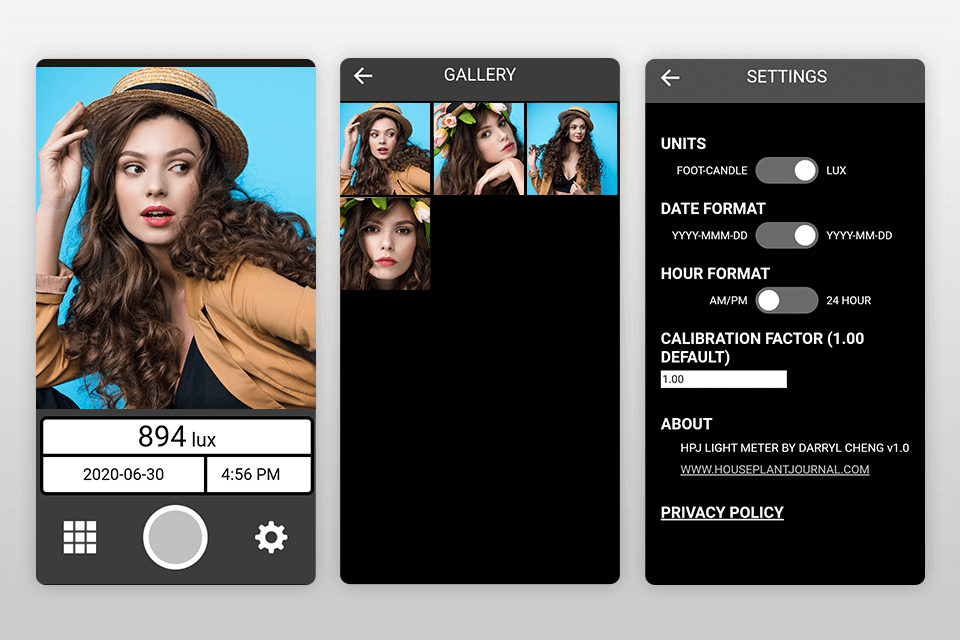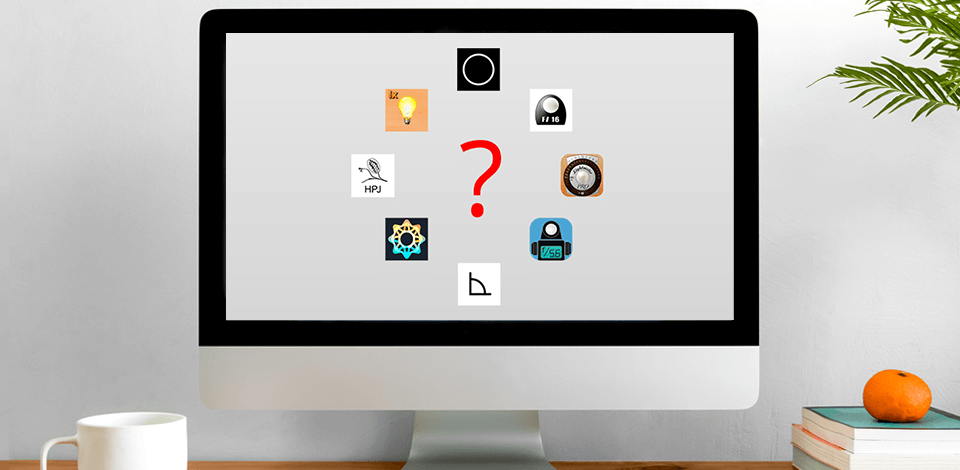
By using light meter apps with spot metering you can measure the lighting levels before a photoshoot. It allows quick diaphragm adjustment and achieving a good exposure. Thus, you can shoot high-quality landscape or plant photos and footage without purchasing overpriced equipment.
These light meter apps are just as good as light meters. Their effectiveness depends on the functionality of your smartphone. After downloading one of these apps, you need to adjust the lighting in the room or outdoors, as well as measure exposure, focal distance and depth of field with the help of available tools.
Verdict: The myLightMeter application has been designed by professional photographers to help users improve photo shooting quality without purchasing expensive equipment. It offers extended sensitivity at -2 / -4EV for taking photos in poor lighting conditions.
With this light meter app you can calculate the hyperfocal distance for 5 lenses by saving exposure data, focal distance and sensor parameters. There is another interesting feature as well, namely, you can read exposure data of every photo in your gallery.
If it’s impossible to measure lighting levels due to poor lighting, you will be able to use two LED indicators. This app is perfectly suitable for architecture and seascape photography.
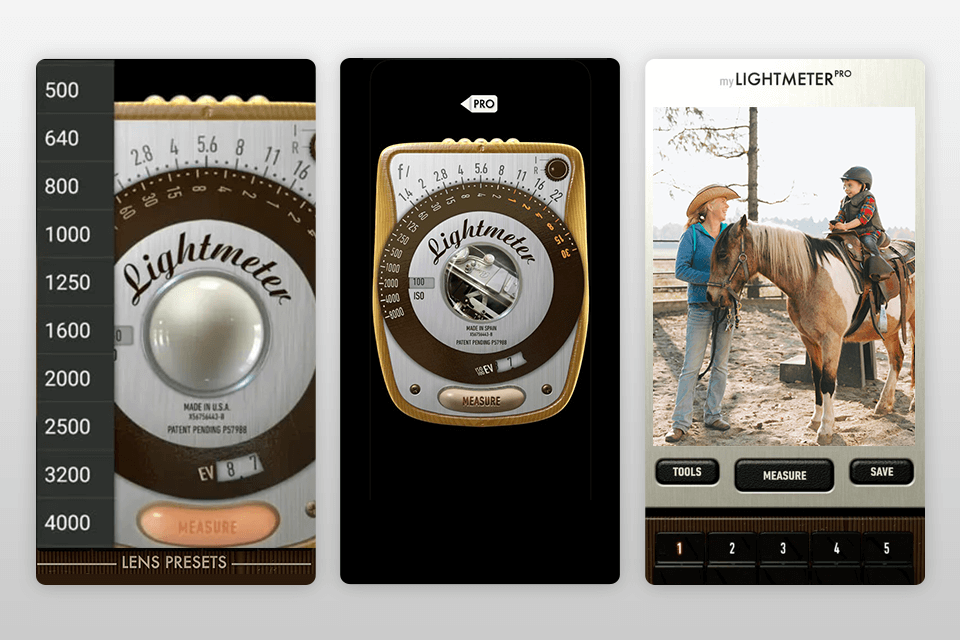
Verdict: The Light Meter Free app offers reflected and incident light meters to its users. Reflected light levels are measured with the help of the camera while incident light levels are measured by using a light sensor.
This app is highly useful for golden hour photography and landscape photos.
This Android light meter comes with a Sunny Sixteen calculator and a Depth of Field calculator. It also has an EXIF reader. You can calculate white balance with high precision which will simplify photo post-processing. You can also use it with any camera.
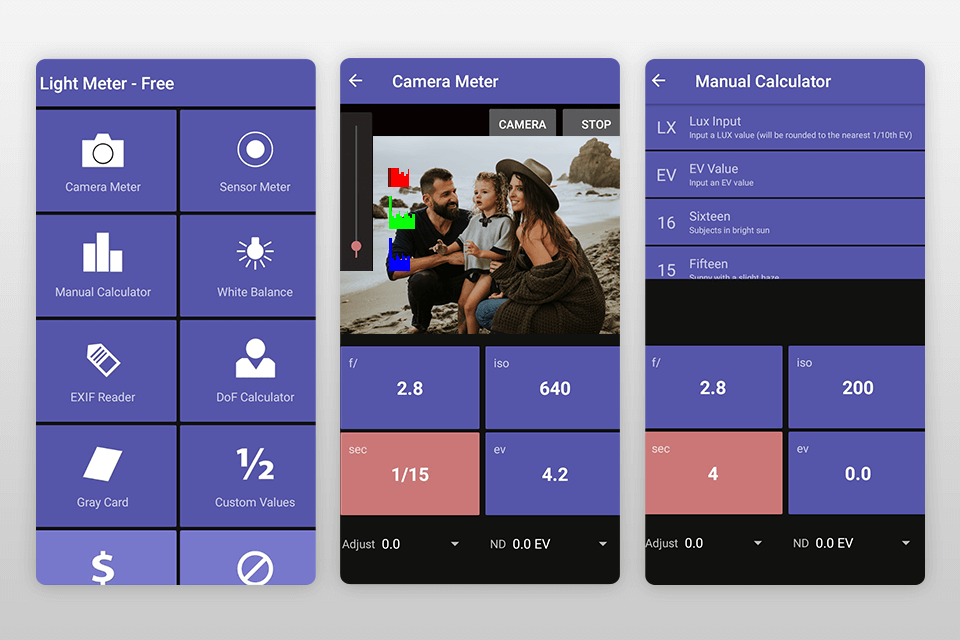
Verdict: Lux Light Meter is quite a handy lighting measurement tool that is perfect both for indoor and outdoor use. This app uses several light sensors to show mean and maximum values in Lux and FC.
You need just to click one button for Lux Light Meter to display lighting levels data. If you have a camera, you won’t need to buy overpriced equipment. This light meter for iPhone is quite useful when it comes to measuring light data in a greenhouse, at your workplace, or when you are taking landscape photos.
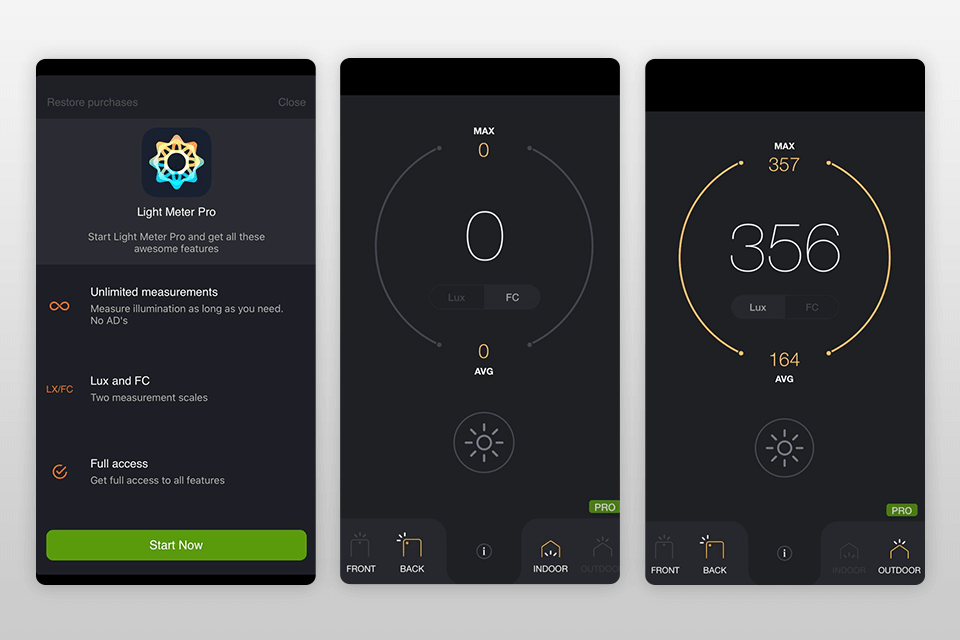
Verdict: The Pocket Light Meter app is compatible with all manual cameras available on the market. By using it, you can easily measure lighting levels before taking photos of landscapes or buildings. It’s suitable for bird photography as well.
This light meter app combines tools for EV measurement and handy features for F-stop and shutter speed calculation. Besides, you will get access to a photo gallery that allows sharing links to the photos taken by your camera.
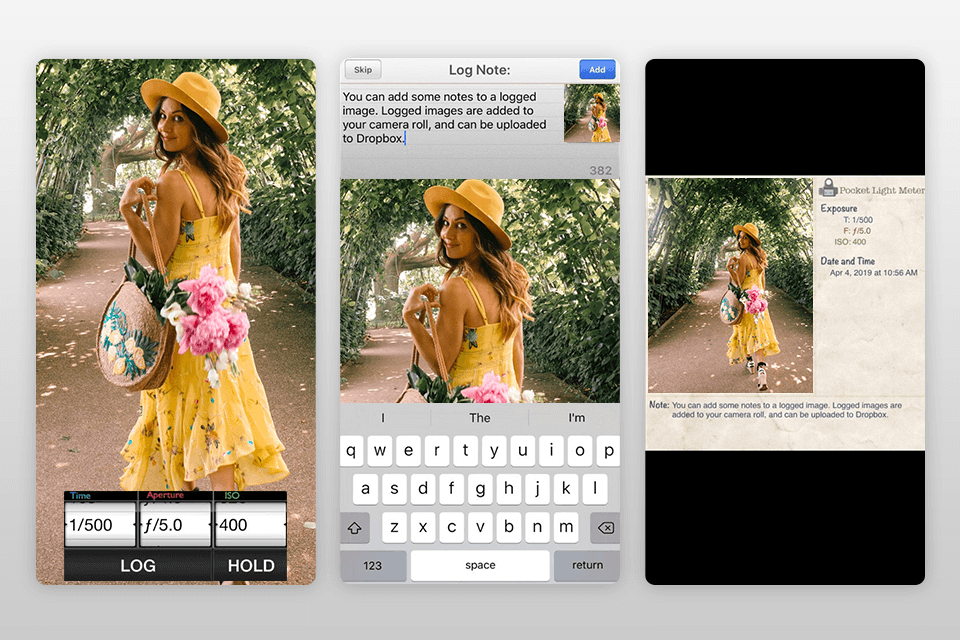
Verdict: If you need to measure reflected light levels, try using Lumu Light Meter. You can also purchase a paid version that allows for color temperature and flash measurements.
The full version of this photography light meter app includes exposure and contrast adjustment tools, lux meter, and a video mode. One of its key advantages is its Stop Metering feature. You can use your smartphone’s camera as a reflection meter.
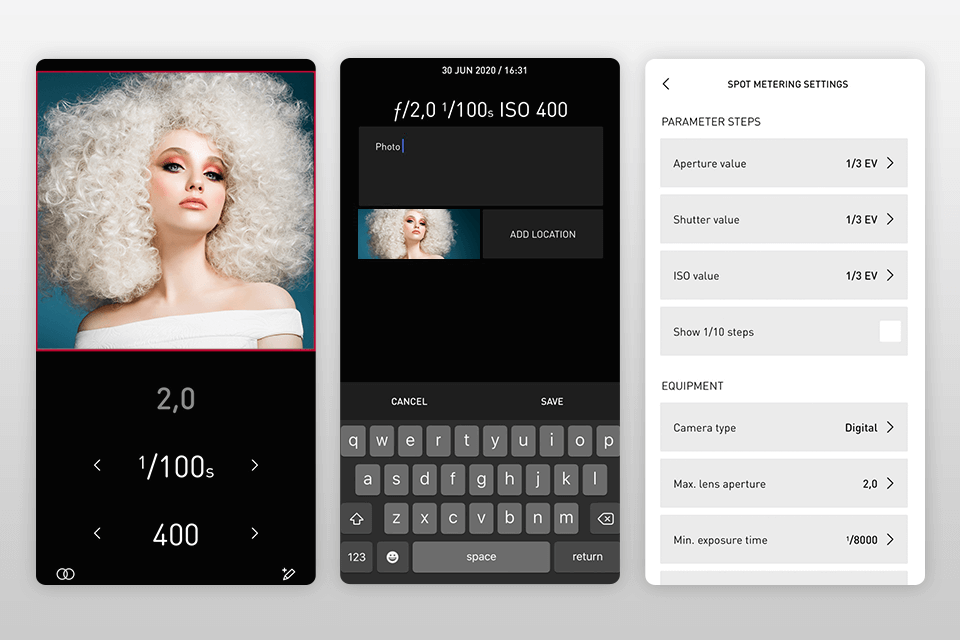
Verdict: If you need to provide optimal lighting levels for your greenhouse or photos taken indoors, take a look at the Korona Plant Light Meter. This application helps improve lighting for more effective plant growing and energy costs saving. It also allows taking close-to-life shoots by adjusting exposure.
Being one of the most useful lux meter apps, Korona uses the front camera and enhanced image processing algorithms. The app comes with a handy hold feature. You will see a grainy picture in the background, which helps you understand if you are aiming your smartphone correctly.
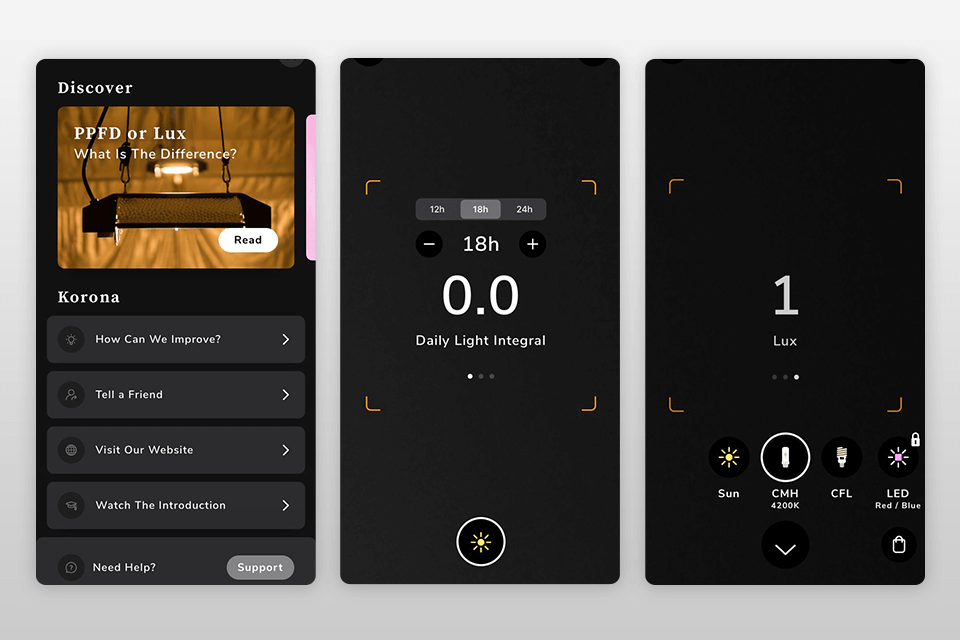
Verdict: Lux Meter allows for measuring lighting levels by using a light sensor on your smartphone. You can calibrate the device with the multiplier, use sensor data, check minimum, maximum, and mean value.
This light meter app comes with a well-designed interface and a handy diagram that visualizes data perfectly. The application is quite useful if you need to check light levels indoors or outdoors. It also works perfectly when you need to measure the light falling on the top leaves of your plants.
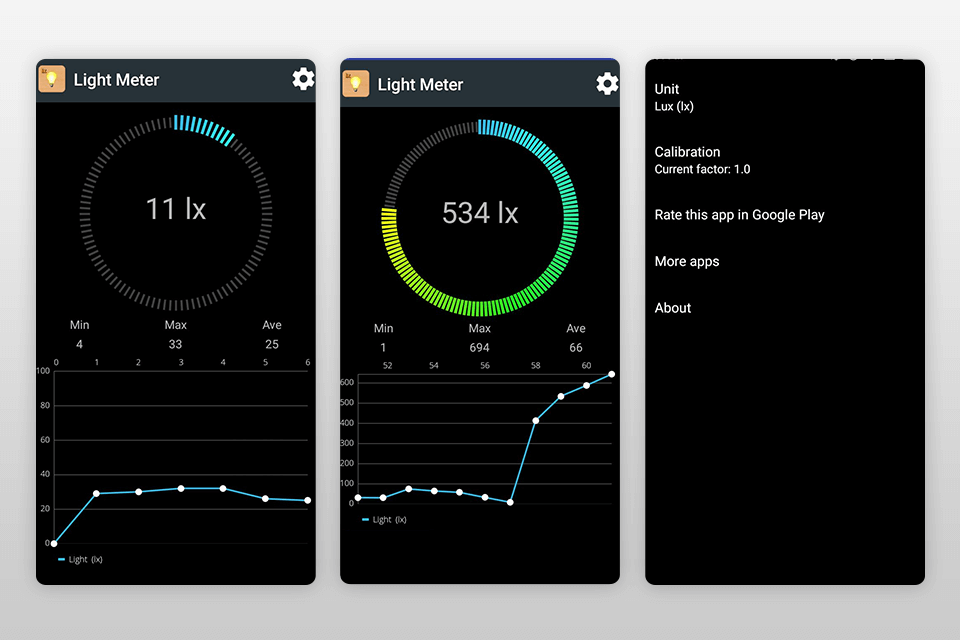
Verdict: The HPJ Light Meter boasts a well-thought-out design and is capable of measuring lighting levels in foot-candles or lux. It records data together with images taken with the frontal camera. Its main task is in determining if the lighting is sufficient for taking photos or growing plants.
Thanks to the app displaying the output camera signal, you can determine brightness levels easily. However, if you take into account the fact that the application has been designed for plant enthusiasts, it has a significant drawback. There is a lack of information about lighting levels that are necessary for growing different kinds of plants.
